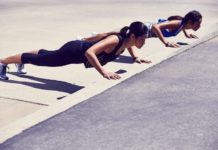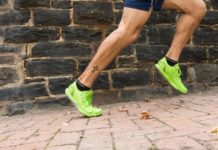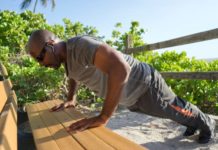
How Improving Strides Improves Walking Fitness
Walking seems like a pretty basic human movement. After all, it’s one of the first major motor skills we learn, and we all know walking more — getting in those 10,000 steps per day — is important for optimal health. But even with a basic movement pattern like walking, there are ways to improve, to make each walk more efficient, and ultimately, healthier for you.
Here, we’re looking at what you should know about your stride — meaning each footfall on the ground — and how it can make you smoother on your walk while boosting your fitness and health.
FOCUS ON SMOOTH AND QUIET
Researchers have found that with every footstep, the impact of your foot on the ground sends pressure waves up through your arteries, increasing the supply of blood to your brain — and that’s a great thing. But you don’t need to stomp on the ground to have these positive brain benefits.
In fact, experts agree the most important part of finding your best stride is focusing on staying smooth and quiet. Not bouncing, not stomping. Repeat the mantra of “smooth, quiet” in your head on repeat as you walk, especially if you’re someone who’s been told you have a loud footfall. Walking like this is more efficient, and it decreases your risk of injury. It also helps to make you quicker on your feet at a walking pace.
SPEED UP
On the note of quick walking, you may find a smoother stride comes when you speed up — but not too fast. A good goal to aim for in a brisk walk is 100 strides per minute. (You may need to slowly work up to this, if you’re new to walking or recovering from an injury.)
Even at a moderately brisk pace, researchers found that walking more briskly actually decreases your ‘all-cause’ mortality risk by 20% compared to a slow shuffle. Walking at a brisk pace is surprisingly more beneficial than a more intense run when it came to a person’s risk for high cholesterol and high blood pressure, according to a 2013 study of more than 45,000 walkers and runners.
STEP HEEL-TO-TOE
Other than bears and great apes, humans are the only animal who uses a heel-to-toe foot strike when walking. It turns out it’s much more efficient than trying to walk on your toes or on the balls of your feet: 83% more efficient. But if you’re wearing heels for most of the day, you’re less likely to feel the “heel-toe” way of stepping, but walking around the house barefoot (or in socks) rather than heavily padded slippers can help your foot muscles wake back up.
MIX IT UP
Biomechanist and movement expert Katy Bowman wants people to adjust their stride depending on who they’re walking with or where they’re walking. As we get older or become more sedentary, we lose the ability to take longer strides and end up in a more “shuffling,” small-step gait. But your goal is to be able to vary your steps: To be able to keep up with your tall friend on a walk by elongating your stride slightly while picking up the pace, or to move from side to side easily as you navigate walking your large (and constantly sniffing) dog.
Bowman is a fan of full-body mobility work to improve your ability to vary your stride, and she delves into the small movements and mobility exercises and tests that can improve your run in her course, Walking Well. “As you mobilize more parts of your body, it will be easier to reach and adjust for different strides, improving your ability to walk over all sorts of uneven terrain,” she says.
Remember, your stride isn’t just about your legs and feet, your torso, arms and head all play a role in how well you walk. Take a few minutes to stretch before you walk, doing simple dynamic moves like lunges in all directions (to each side, forward and backward) and on your walk, consider varying your terrain to practice different strides. Find some ups and downs, and even simply step on and off curbs or walk on the grass on a median instead of sticking to the sidewalk.
Check out “Workout Routines” in the MyFitnessPal app to discover and log workouts or build your own with exercises that fit your goals.
































